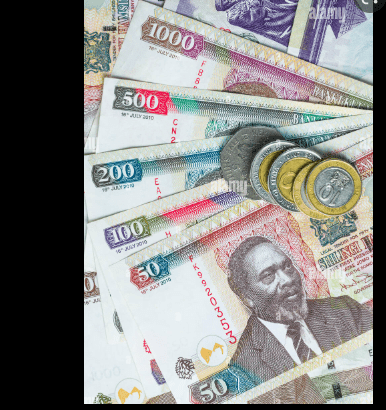Shilling Falls To Ksh.118, A Historically Low Mark

As the local currency continues to lose ground against the US dollar during the second half of the year, the Kenya Shilling has fallen to a new historical low of Ksh.118.
According to the Bloomberg KES: USD spot-rate, the local currency was quoted at Ksh.118.02 at the end of trade on Tuesday, down from Ksh.117.98 at the end of Monday.
The rising need for dollars, notably from the manufacturing and energy industries as commodity prices like oil soar around the world, has been blamed for the local currency’s prolonged weakness.
The Kenyan Shilling has lost value versus the US dollar so far in 2022, falling an estimated 4.31 percent.
The Russia-Ukraine war and output gaps from oil exporters are two factors that analysts across the board believe will make the Shilling continue to be under pressure for the remainder of the year as world prices remain sticky at record highs.
Furthermore, since many store up on their reserves of hard currency to cover rising import costs, merchandise traders are predicted to maintain demand for the US dollar.
A growing current account deficit as the gap between imports and exports increases is projected to put pressure on the local currency in addition to the increased demand for US dollars.
At the end of 2022, the current account deficit, according to the Central Bank of Kenya (CBK), will be 5.9% of GDP.
So far this year, rising gasoline import costs have worked to offset growing export revenues and remittances from the diaspora.
The value of the Kenyan Shilling has also been hampered by higher costs for servicing external debt at the beginning of the year because those payments deplete CBK’s foreign exchange reserves.
Despite this, the usable foreign exchange reserves have continued to be higher than the statutory minimum of keeping at least four months of import cover, which helps underpin the shilling.

 The Road to Victory: President Ruto’s Triumph in the August 2022 General Election
The Road to Victory: President Ruto’s Triumph in the August 2022 General Election  Finance Bill 2023- The Benefits
Finance Bill 2023- The Benefits  How Small Businesses Can Use AI to Increase Sales In Kenya
How Small Businesses Can Use AI to Increase Sales In Kenya  Not Today; Matiang’i’s Lawyer Says His Client Will Not Appear Before DCI Today
Not Today; Matiang’i’s Lawyer Says His Client Will Not Appear Before DCI Today  Senator Onyonka Urges President Ruto To Be Careful On How He Handles Matiang’i’s Case
Senator Onyonka Urges President Ruto To Be Careful On How He Handles Matiang’i’s Case  Form One Student Beaten To Death By Teachers Over Alleged Physics Exam Cheating
Form One Student Beaten To Death By Teachers Over Alleged Physics Exam Cheating